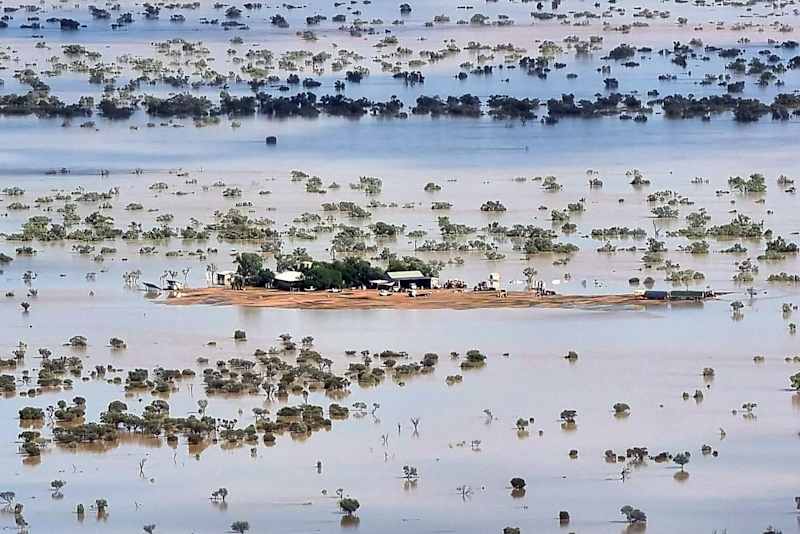The flood covered an area of \u200b\u200bmore than Finland in Australia – video: Kangaroo escapes rising water
More than 100,000 cattle animals may have drowned in water masses.
In Australia’s Koillios, Queensland State, there was an exceptional amount of rain during March.
Queensland has an area of \u200b\u200bover 1.7 million square kilometers, so almost one third of the state suffers from floods.
The rains originated from a hurricane Alfred in Queensland in early March. Although the storm’s winds subsided rapidly over the mainland, Alfred’s rains remained in Queensland, sometimes spreading south to the states of the new South Wales and South Australia.
The Australian Finnish Meteorological Institute has stated that many locations have already rained 500 millimeters this year, which is usually the amount of rainfall throughout the year.
For example, in the remote city of Winton, it has already rained 510 millimeters this year, compared with 387.8 millimeters for the whole year, says The Guardian, British magazine.

Farms and animals in difficulty
Hundreds of thousands of buildings have been left under water. Queensland management plans to grant cheap loans to residents who have lost their home or company.
Floods have caused huge damage to the region’s livestock farms. According to state authorities, up to 100,000 animals have been leached with flood waters, lost or drowned. There are cows, goats, sheep and horses.
Images transmitted to social media show how animals have been tightened to the small humps that have been left above the water. The Queensland Rescue Department is trying to drop feed on helicopters in the middle of the flood.
Floods are also a disaster for natural animals. Residents have described, among other things, flood -fleet kangaroos.
Weather scientists have predicted that global warming will increase the possibility of both drought and floods in Australia.
The Australian flood disaster is continuing. According to the regulators, the remnant of the cyclone Dianne is coming to Queensland, bringing more rainfall to the area, says The Australian.
*Source: AFP*
